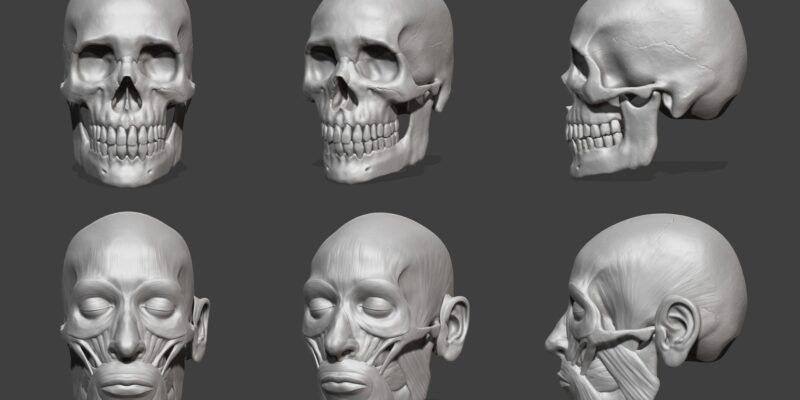An anatomically distinct, deep third layer of the masseter muscle was demonstrated, running from the medial surface of the zygomatic process of the temporal bone to the root and posterior margin of the coronoid process
The arrangement of its muscle fibers suggest it being involved in stabilising the mandible by elevating and retracting the coronoid process. Hence this newly described part of the masseter, is named as M. masseter pars coronoidea (coronoid part of the masseter)
Functions of masseter:
- Elevate the mandible against the maxilla.
- Exert masticatory force.
- Protracting the mandible.
- Lateral movements.
- Has a special significance for facial aesthetics.
This study was performed on 12 formaldehyde-embalmed cadavers, 16 fresh cadavers and one live research subject.
In order to clarify the structure of the masseter and the resulting inconsistency in nomenclature, researchers performed anatomical dissections and methylmethacrylate embedding of formaldehyde-fixed cadavers, and supplemented this by computer tomography (CT) examinations of fresh cadavers and magnetic resonance (MR) imaging of a live subject.

The results of macroscopical and radiological investigations have proved the consistent existence of a third, distinct layer of the masseter muscle in humans. This deepest layer of the masseter, which we was named as the coronoid part (suggested latin name: M. masseter, pars coronoidea), originates posteriorly on the inner, temporal side of the zygomatic process of the temporal bone, with the muscle fibers running diagonally anteriorly, the muscle attaching at the base and along the posterior margin of the coronoid process of the mandible.
The coronoid part of the masseter was present in each case studied, indicating that it is a constant architectural element of the masseteric muscle rather than an anatomical variation.
Anatomy of coronoid part of masseter:
The coronoid part takes its muscular origin from posterior to the temporozygomatic suture of the zygomatic arch, anteriorly from the temporomandibular joint. The muscle arises from the medial surface of the zygomatic process of the temporal bone, and in some cases from the deep layer of the temporal fascia close to its attachment on the zygomatic arch, thus forming the deepest layer of the masseter.
The fibers run parallel and diagonally, from a postero-lateral-superior origin on the zygomatic arch, towards an antero-medial-inferior insertion on the coronoid process.
The main innervation of the coronoid part of the masseter are branches of the masseteric nerve.
Functions:
- Retraction of the mandible, and
- Specifically in the stabilization of the mandibular coronoid process.
Since the coronoid, deep and superficial part of the masseter are all innervated by the masseteric branch of the mandibular nerve, the three muscle layers are able to form a functional unit that stabilizes and closes the jaw.
The specifications of the coronoid part of the masseter muscle are as follows:
- It has its muscular origin on the medial, temporal surface of the zygomatic process of the temporal bone and the deep layer of the deep temporal fascia, clearly separated and distinguishable from the temporal muscle and from the deep part of the masseter.
- The muscle fibers have a diagonal orientation, starting posterior and supero-lateral on the zygomatic process of the temporal bone, running medially and anteriorly towards the root and posterior edge of the coronoid process.
- The coronoid part has a slightly tendinous insertion at the root and along the posterior edge of the coronoid process.
- It has a narrow, elongated, rectangular shape.
- The mandibular nerve and vessels reach the deep and superficial masseter from the temporal fossa, passing through the mandibular incisure both anteriorly and posteriorly from the coronoid part of the masseter.
Precise knowledge of the architecture of the masseter muscle facilitate minimally-invasive procedures and optimal patient therapy.
Source : Annals of Anatomy




















Comments